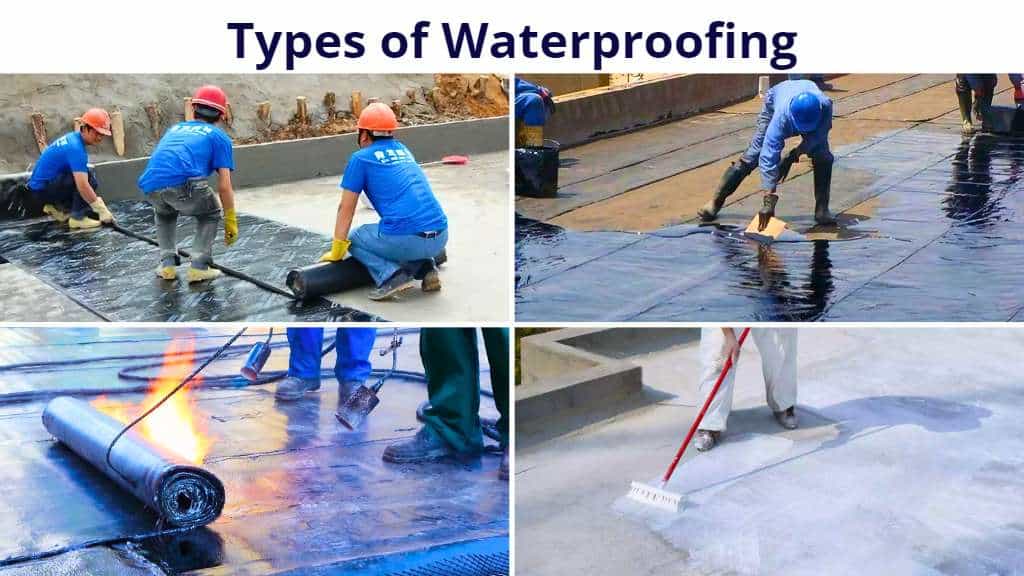Property Geek
We provide the actual and accurate information with unbiased user driven reviews to our viewers, to help them see the best and find the best!
View posts
Waterproofing is essential for protecting your property from the damaging effects of moisture, leaks, and dampness. Without the right materials, your home or building can suffer from mold growth, structural damage, and costly repairs.
With so many waterproofing options available, it can be challenging to choose the most effective solution for your needs. In this article, we will explore the different types of waterproofing materials, helping you make an informed decision to safeguard your property from water-related issues
Let’s see the different types of waterproofing material.
But before we get into types of waterproofing substances, let’s also know where all waterproofing is needed.
Areas that require waterproofing:
Preventing the entry of water and vapor is waterproofing. Filling the structural fracture and moving is beneficial. Positive application is preferred. Different kinds of waterproofing exist. like. Bentonite, liquid, sheet membrane, and cementations. Therefore, picking the finest waterproofing technique is crucial. Some of the types of waterproofing substances are listed below.
By using a specialized liquid roof coating, the procedure of liquid roofing waterproofs a roof. It works well with flat, pitched, and domed roofs of various shapes and sizes. Applying a monolithic, completely bonded, liquid-based covering to a roof is known as liquid roofing. The coating hardens to create an elastic waterproof barrier that resembles rubber and can be stretched without breaking.
To offer more tensile strength, such coating systems are typically reinforced with secondary materials like glass-reinforced plastic. The majority of conventional roofing materials, including felt, asphalt, bitumen, and concrete, may be covered with coatings.
Making a new or old roof watertight may be done affordably through the technique of liquid roofing. Depending on the coating method used, it can provide performance for up to 25 years. In renovation scenarios, liquid roofing is reportedly 70% less costly than total roof replacement.
The base and reactor are the two elements that makeup polyurethane. The base is polyol, while the reactor’s component is isocyanide. Both of them, when combined in a certain design ratio, result in a liquid coating for waterproofing purposes.
Due to its simplicity of installation, polyurethane is a very common choice. This polyurethane application requires considerably less skill and supervision than other waterproofing technologies like sheet membranes and liquid-applied membranes. This kind of treatment may be applied quickly and is also useful once construction is complete.
It is simple to apply, has a flawless finish, and is long-lasting and wear-resistant. Alkaline cleansers, battery acid, and fuels are all resistant to UV and weather.
The simplest waterproofing products to use are generally those made of cement. They are easily accessible from masonry product vendors, and they are simple to mix and use. A long-handled brush will simplify your life if you intend to utilize this material.
Spend the additional cash to purchase acrylic additive, a white, milky liquid that you may combine with cement. A stronger, longer-lasting coating and improved bonding will result.
The main drawback is that cementitious goods have no give, which is likely because cement doesn’t stretch in any way that’s noteworthy. They can withstand a head of water without issue, but they can hardly endure any joint or crack movement.
Cementitious waterproofing is used in the following type of structures:
Systems of bituminous waterproofing are intended to safeguard both residential and commercial structures. Bitumen is a mixture of organic liquids that is extremely sticky, viscous, and waterproof (also known as asphalt or coal-tar pitch).
When building roofs, these systems, which come in the shape of roll roofing materials or roofing felt, are occasionally employed.
Due to its dependable performance, bituminous membrane waterproofing is a common technique for low-sloped roofs.
Bituminous coating is a sort of flexible protective coating that is used for waterproofing. It works well as a waterproofing and protective coating, especially on surfaces like concrete foundations.
In conclusion, you may inspect any section of the building’s exterior that needs waterproofing on wall, including the bathrooms and kitchen, basement, balconies, decks, green roofs, swimming pools, and water tanks, among others
As a result, you can decide which kind of waterproofing technique may be used in a certain situation. To be sure what you are doing is correct, you can also consult experts.